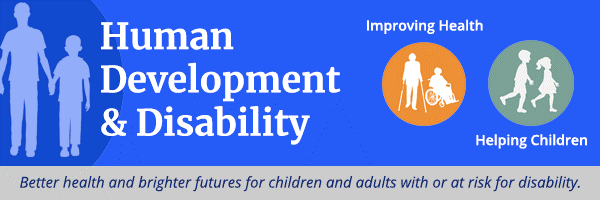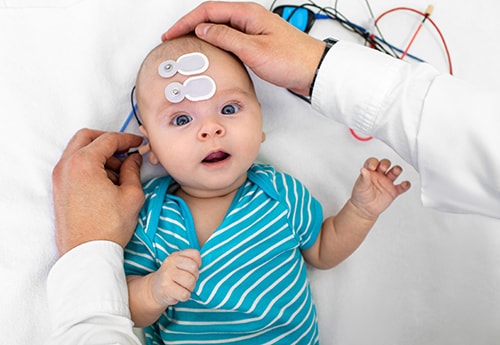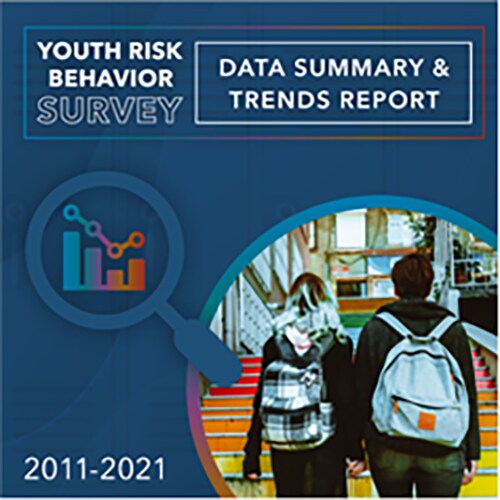DHDD Newsletter – February 2023

A Note from the DHDD Director
Dear DHDD Partners,
Earlier this month, I had a chance to connect with many of you during DHDD’s Quarterly Partner Meeting. During the event, we provided valuable updates on fiscal year 2023 funding, upcoming communication initiatives, and other priorities. Guest speakers provided updates on CDC’s COVID-19 activities, and led a discussion to get your feedback on barriers to COVID booster uptake. Thank you for sharing insights from your communities based on lived experience. If you haven’t attended in the past, I hope you’ll join us in the future. The meetings are virtual and open to all DHDD partners.
At another event this month, I was reminded of the importance of disability data at both state and federal levels. I participated in the State of the Science Conference on Disability Statistics, hosted by the Interagency Committee on Disability Research, to discuss current topics in disability statistics and future directions. One example is DHDD’s collaborative work to develop, test, and disseminate a disability definition within the National Syndromic Surveillance Program. This will allow national, state, and local jurisdictions to efficiently identify emergency department visits by people with disabilities to inform intervention strategies during public health emergencies. I am excited to be a part of this effort, and look forward to the increased impact we can all have through programs and policies informed by data.
To learn more about the work of DHDD and other divisions in our center, check out the most recent annual report titled, NCBDDD Fiscal Year 2022: Making a Difference Across the Lifespan. Posted last month, the report presents information on our center’s accomplishments, future directions, notable scientific publications, budget, and state funding.
I am proud to be a part of this center, our division, and of the work we do together with you, our partners, to optimize the health and development of people with, and at risk for, disabilities.
Sincerely,
Karyl
Karyl Rattay, MD, MS, FAAP
DHDD Director

Publications
How Do Sleep Disorders Affect Children with Tourette Syndrome?

A study published in Pediatric Neurology found that children with Tourette syndrome and a sleep disorder had other mental disorders and had severe Tourette syndrome symptoms and impairment more often than children with Tourette syndrome without a sleep disorder. The analysis included socio-demographic factors, diagnosis of other mental disorders, Tourette syndrome medication use and associated side effects, and Tourette syndrome severity and impairment due to tics among U.S. children in 2014. Findings showed that children with both Tourette syndrome and a sleep disorder were more often from households with lower parental education levels and experiencing poverty then children with Tourette syndrome without a sleep disorder. Children with both Tourette syndrome and a sleep disorder had more often ever used medication for their Tourette syndrome compared to children with Tourette syndrome without a sleep disorder. Results may help inform assessment and management of sleep disorders in children with Tourette syndrome. Read a summary of the study.
Steps for People with Weakened Immune System to Stay Safe from COVID-19
CDC has published several recommendations in a January issue of Morbidity and Mortality Report to help people with weakened immune systems stay safe from COVID-19. CDC recognizes that people who have immunocompromising conditions continue to face increased risks of SARS-CoV-2 infection and associated severe illness. We are committed to working with you to improve access to COVID-19 vaccinations, testing, and life-saving treatment. Visit the CDC website for more information on the steps you can take to protect yourself and others.
Tools and Resources
Hearing Loss Resource for Families Now Available in Spanish

DHDD’s Early Hearing Detection and Intervention program has an updated Spanish version of A Parent’s Guide to Genetics & Hearing Loss available for download here. The guide is not only useful for parents, but also for genetics counselors and other healthcare professionals who work with and educate families. The material covers
- types of hearing loss
- genetic testing
- some of the available hearing loss interventions
Additionally, the English version of this resource is now available in a series of HTML-based web pages.
CDC Report Raises Urgency to Support School-Based Programs as Vital Lifeline for Struggling Youth

The Centers for Disease Control and Prevention (CDC) released data from its Youth Risk Behavior Survey Data Summary and Trends Report: 2011-2021, which show that many teens are experiencing increasingly high levels of violence, sadness, and suicide risk. This report has the first YRBS data collected since the start of the pandemic. Although there are a few behaviors and experiences that are moving in the right direction, the increases in harmful experiences among adolescents are striking.
- Nearly 3 in 5 U.S. teen girls experienced persistent feelings of sadness or hopelessness in 2021—double that of boys and the highest levels reported in a decade.
- LGBQ+ youth were substantially more likely to have experienced all forms of violence and had worse mental health outcomes than their heterosexual peers. While all teens reported increasing mental health challenges, experiences of violence, and suicidal thoughts and behaviors, CDC’s new data indicate females and LGBQ+ students fared worse than their male or heterosexual peers in 2021.
- Youth experienced high and worsening levels of persistent sadness or hopelessness across all racial and ethnic groups; and reported increased suicide attempts among Black youth and White youth.
Schools can take steps to help prevent and reduce the negative impact of violence and other trauma and improve mental health. CDC’s What Works in Schools supports local school districts in improving health education, connecting young people to the services they need, and making school environments safer and more supportive. What Works in Schools can help to reverse negative trends and ensure that youth have the support they need to be healthy and thrive.
Partner News and Announcements
HHS Announces COVID-19 Public Health Emergency Transition
Based on current COVID-19 trends, the Department of Health and Human Services (HHS) is planning for the federal Public Health Emergency (PHE) for COVID-19 to end on May 11, 2023. The public health response to the spread of SARS-CoV-2, the virus that causes COVID-19, remains a priority, but thanks to the Administration’s whole-of-government approach to combatting the virus, we can transition away from the emergency phase. This fact sheet provides information on what services will and will not be affected.
Funding Opportunity to Improve Care for Children with Medically Complex Conditions
Centers for Medicare & Medicaid Services posted a notice of funding opportunity “Health Home for Children with Medically Complex Conditions.” The planning grant will support the development of a State Plan Amendment (SPA) that addresses coordinated care using a health home model for children with medically complex conditions. A condition is defined as “a serious, long-term physical, mental, or developmental disability or disease,” including cerebral palsy, cystic fibrosis, sickle cell disease, muscular dystrophy, spina bifida, epilepsy, and severe autism spectrum disorder. Health home services include
- comprehensive care management
- care coordination with a full range of pediatric specialty and subspecialty medical services
- comprehensive transitional care, including follow-up from inpatient to other settings
- patient and family support
- referrals to community and social support services
- use of health information technology to link services

